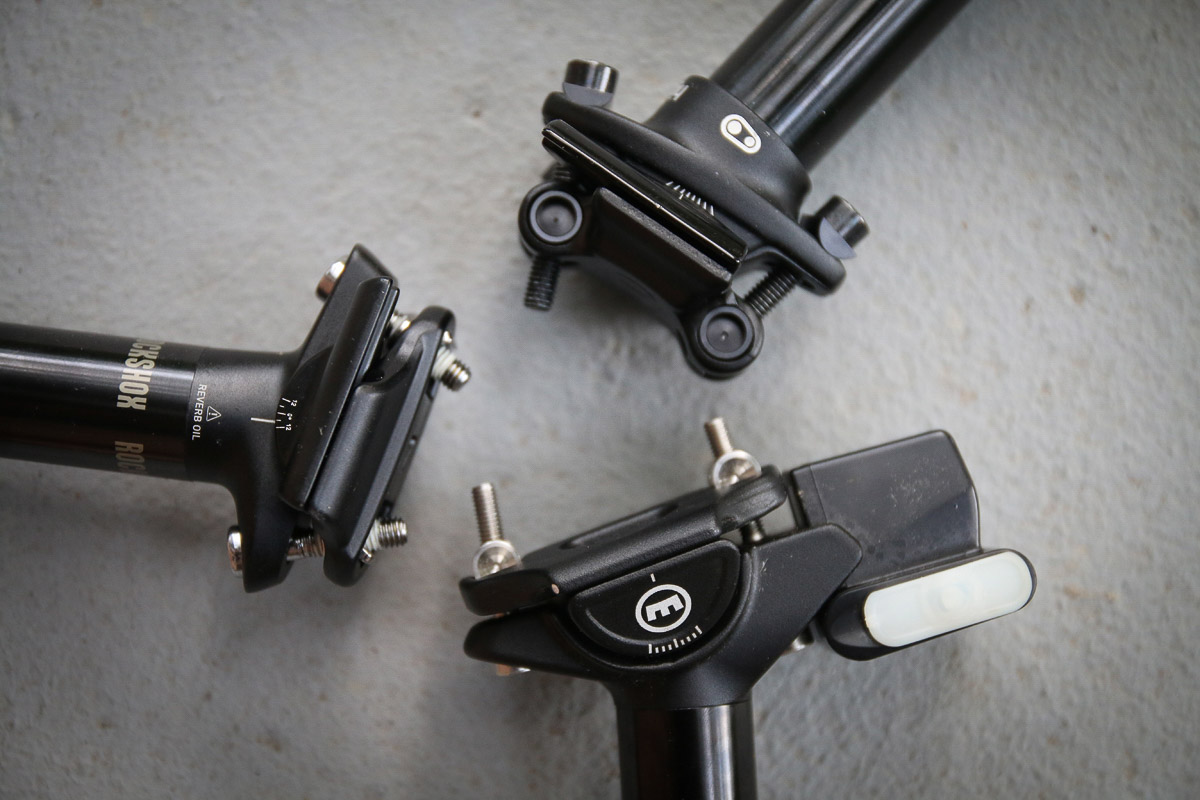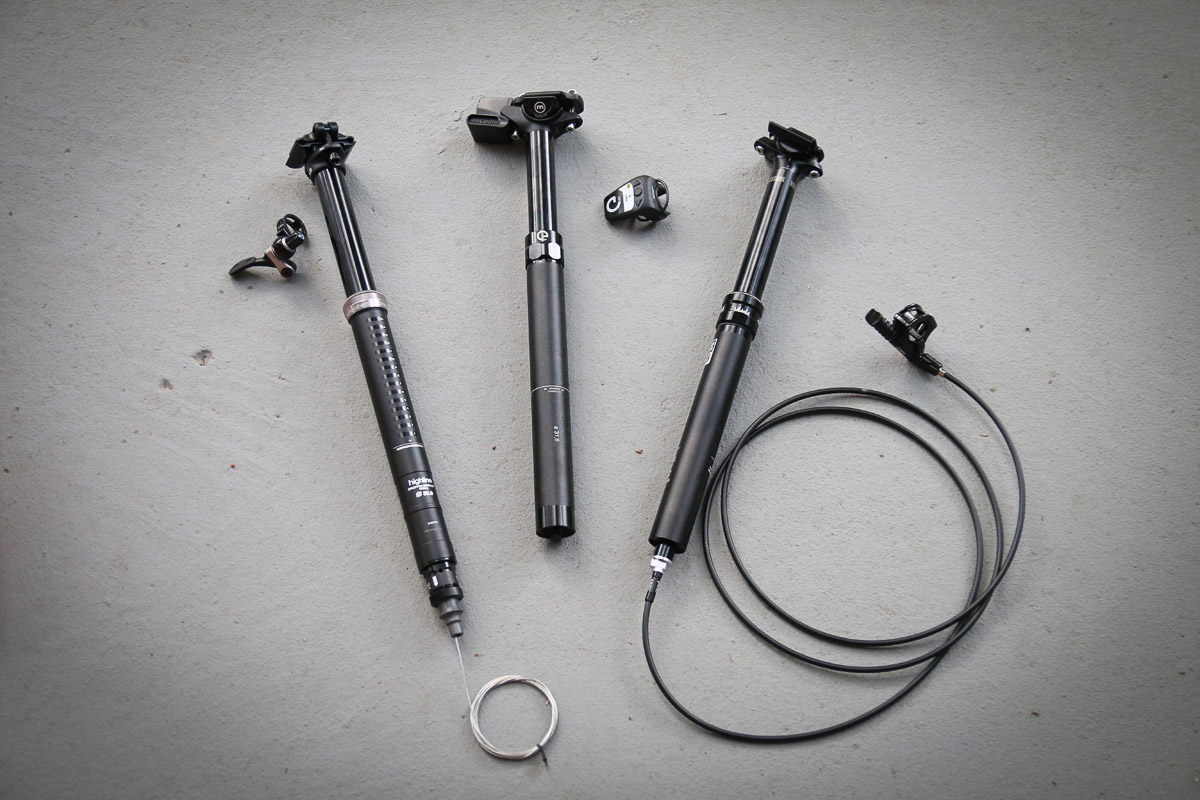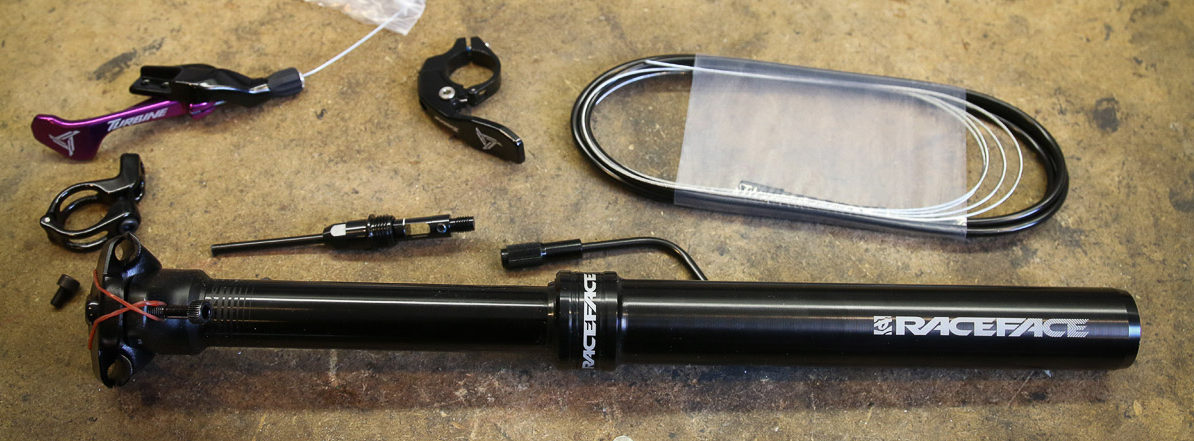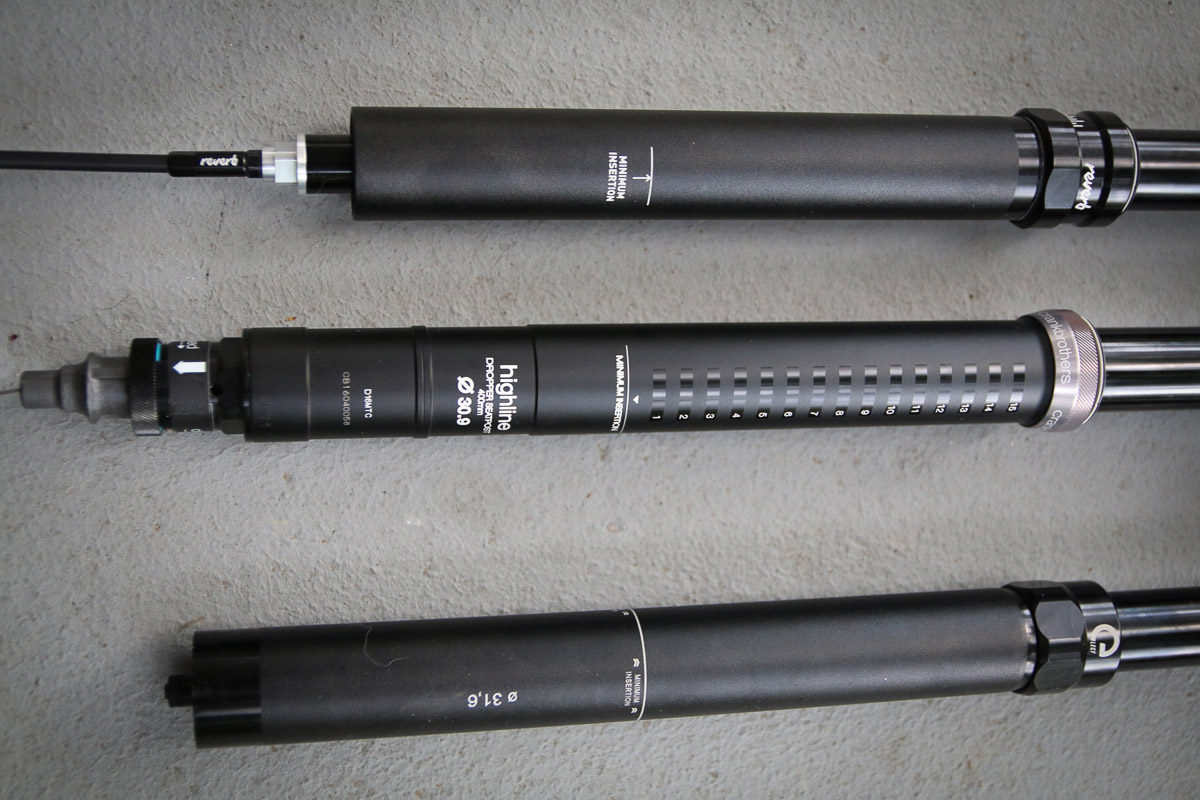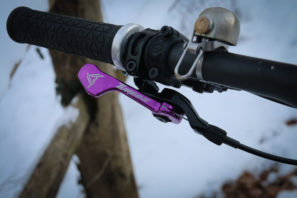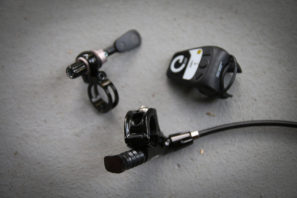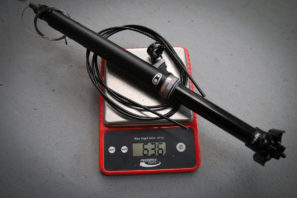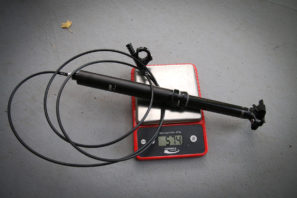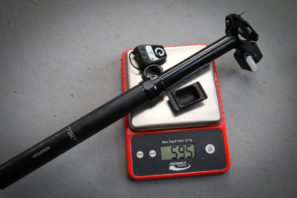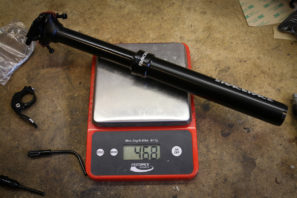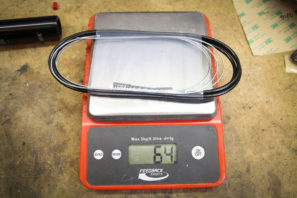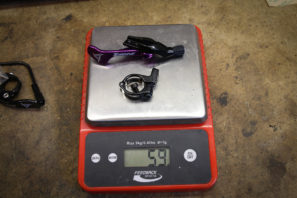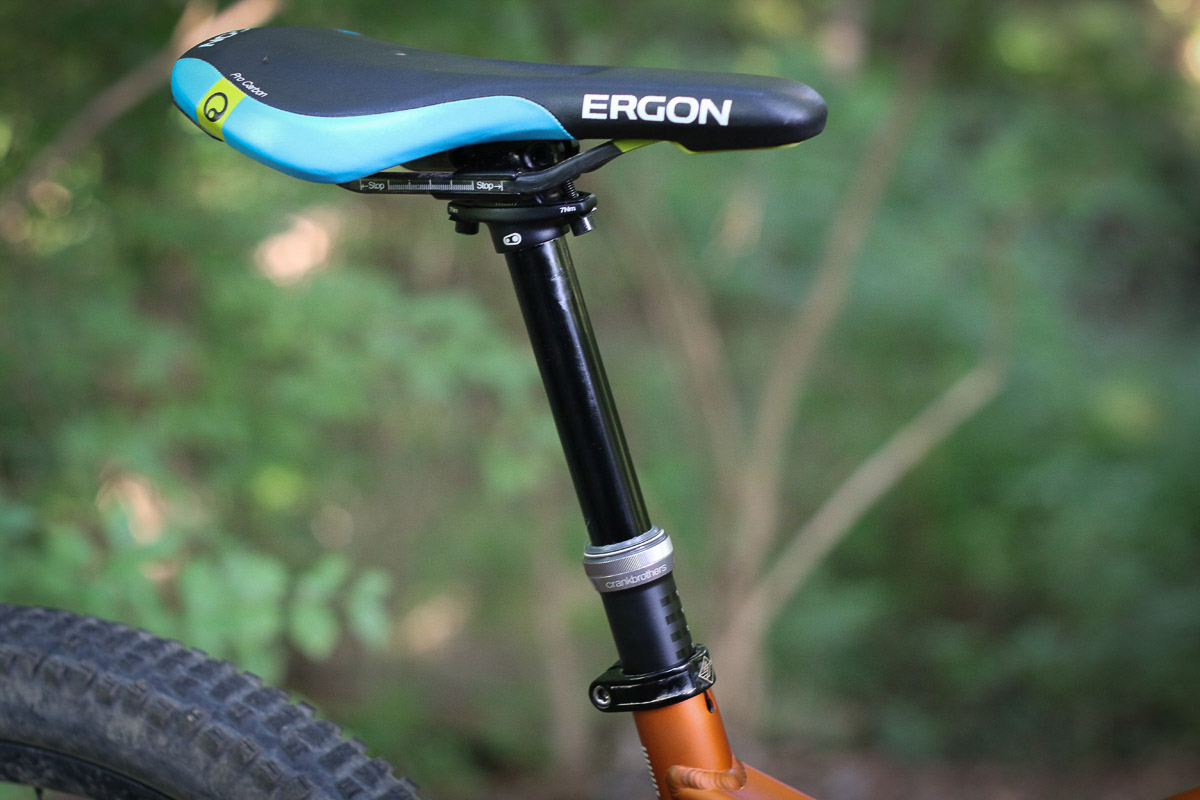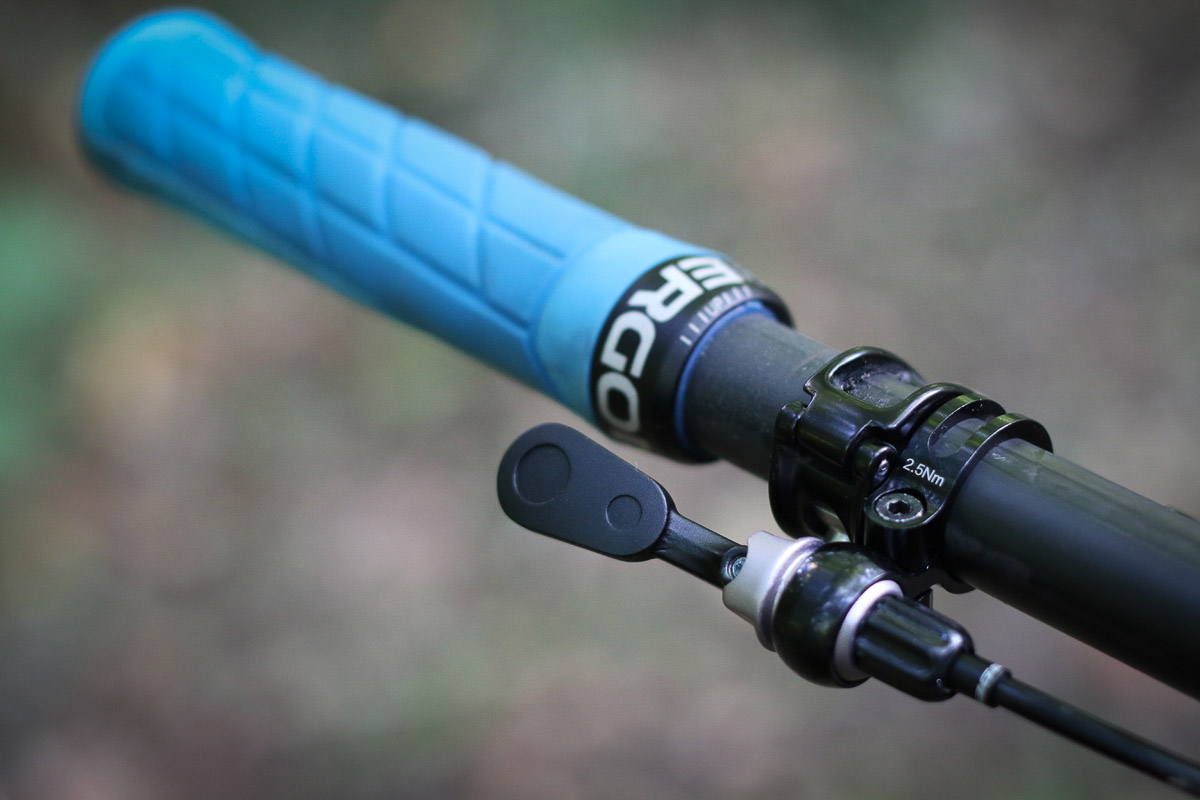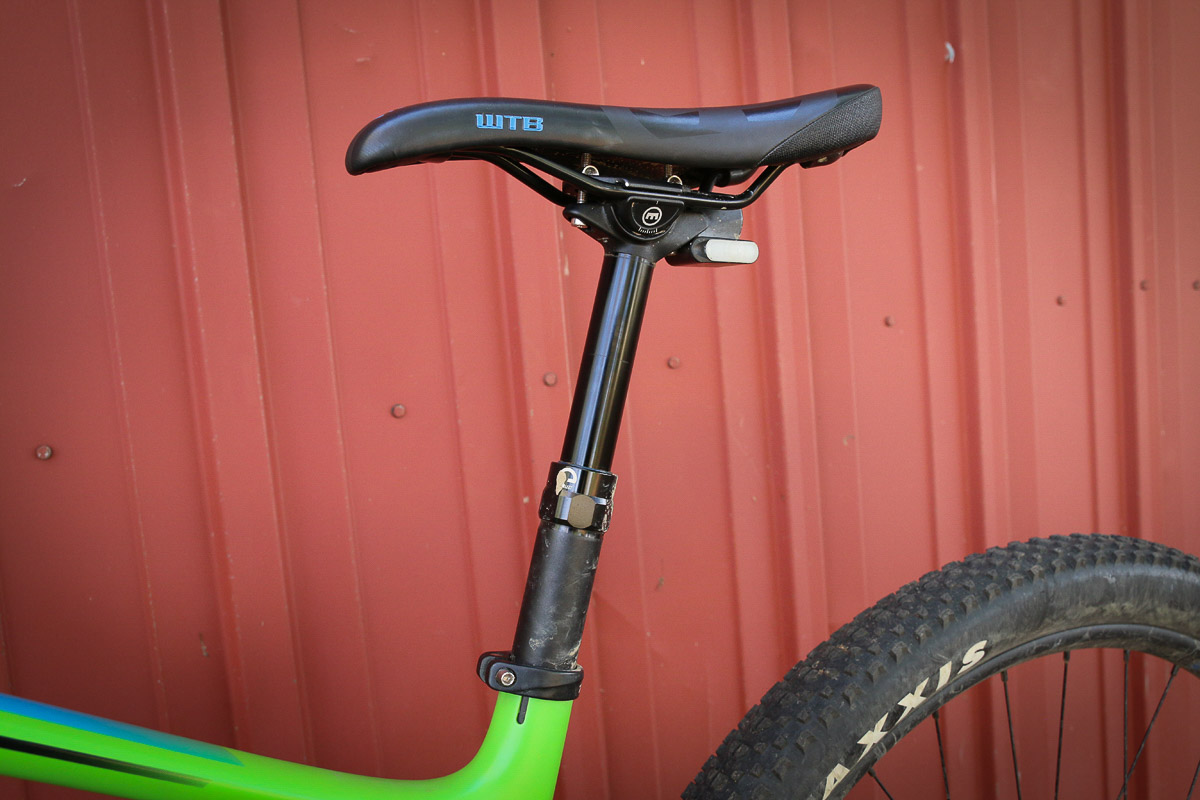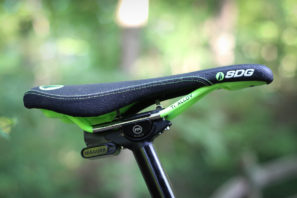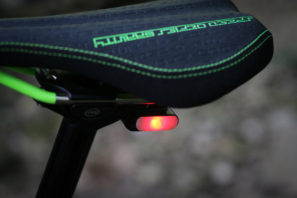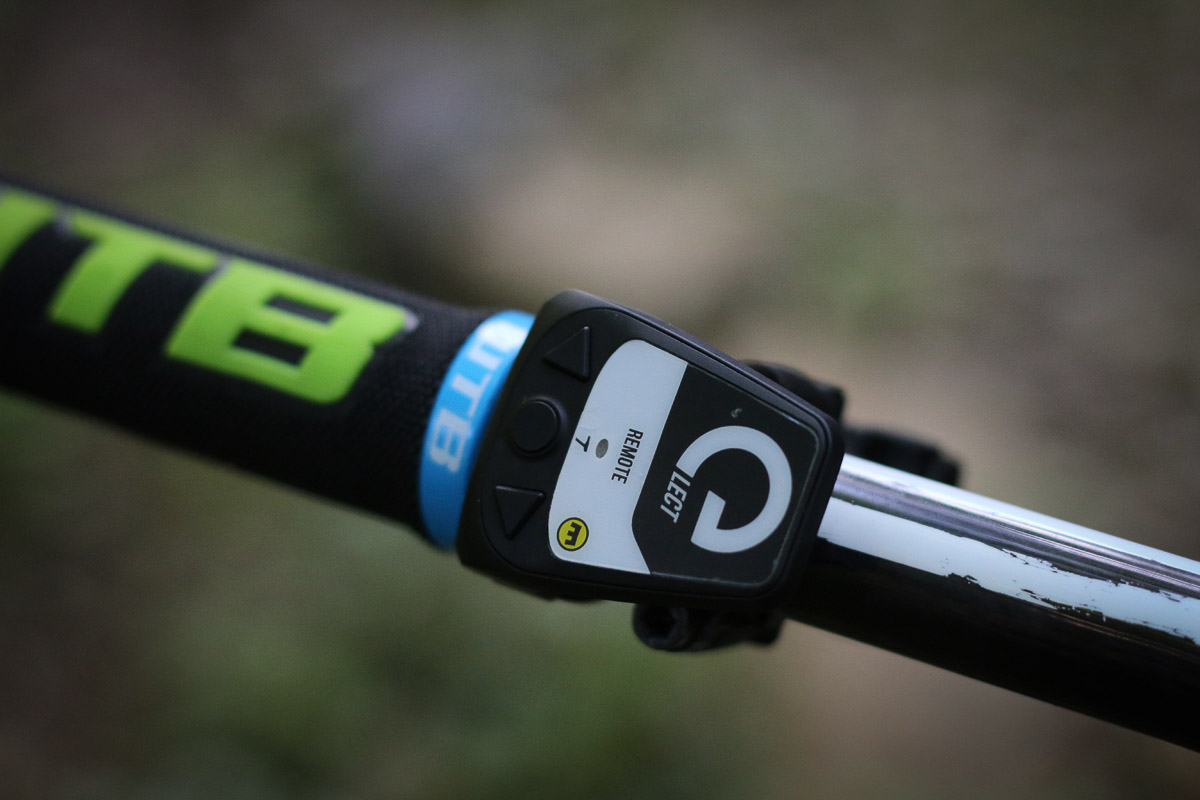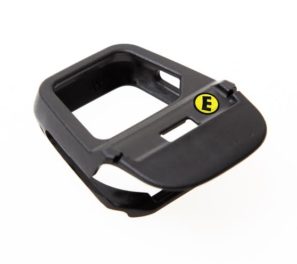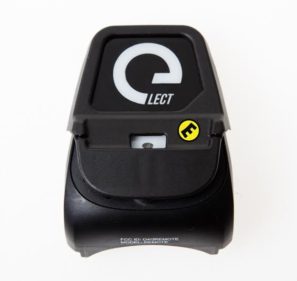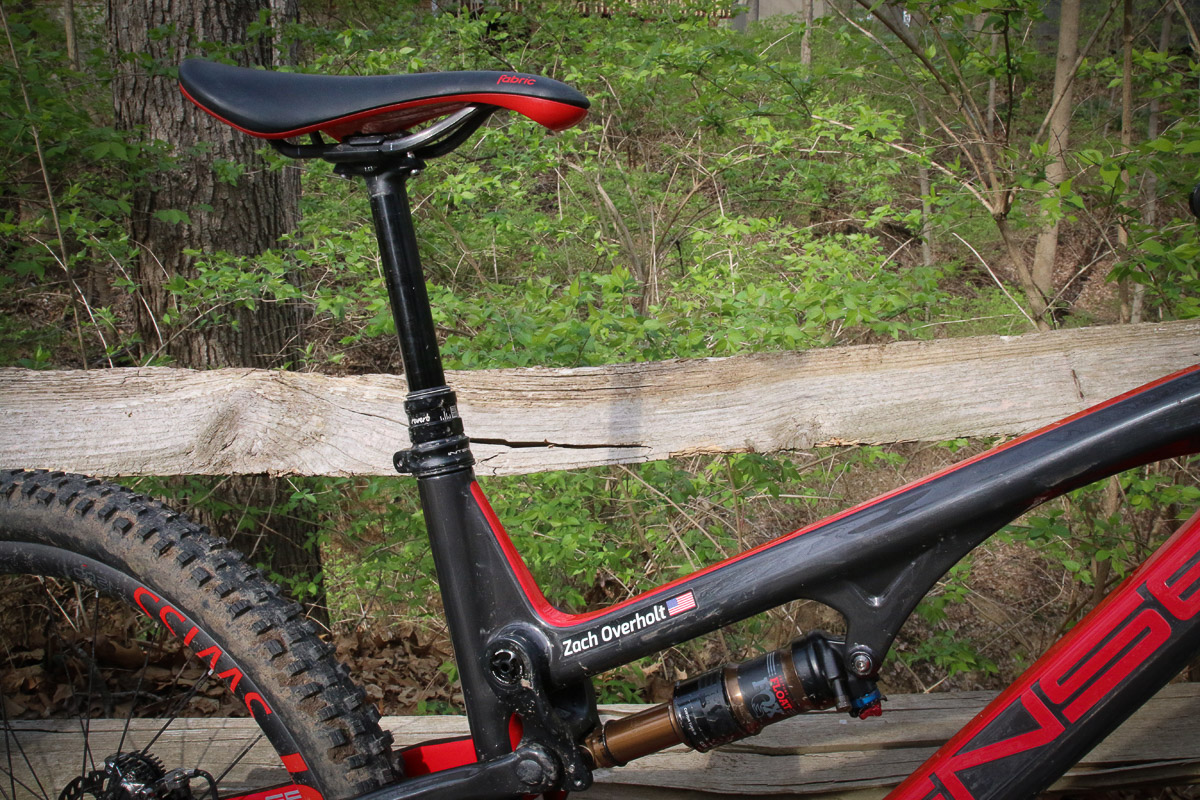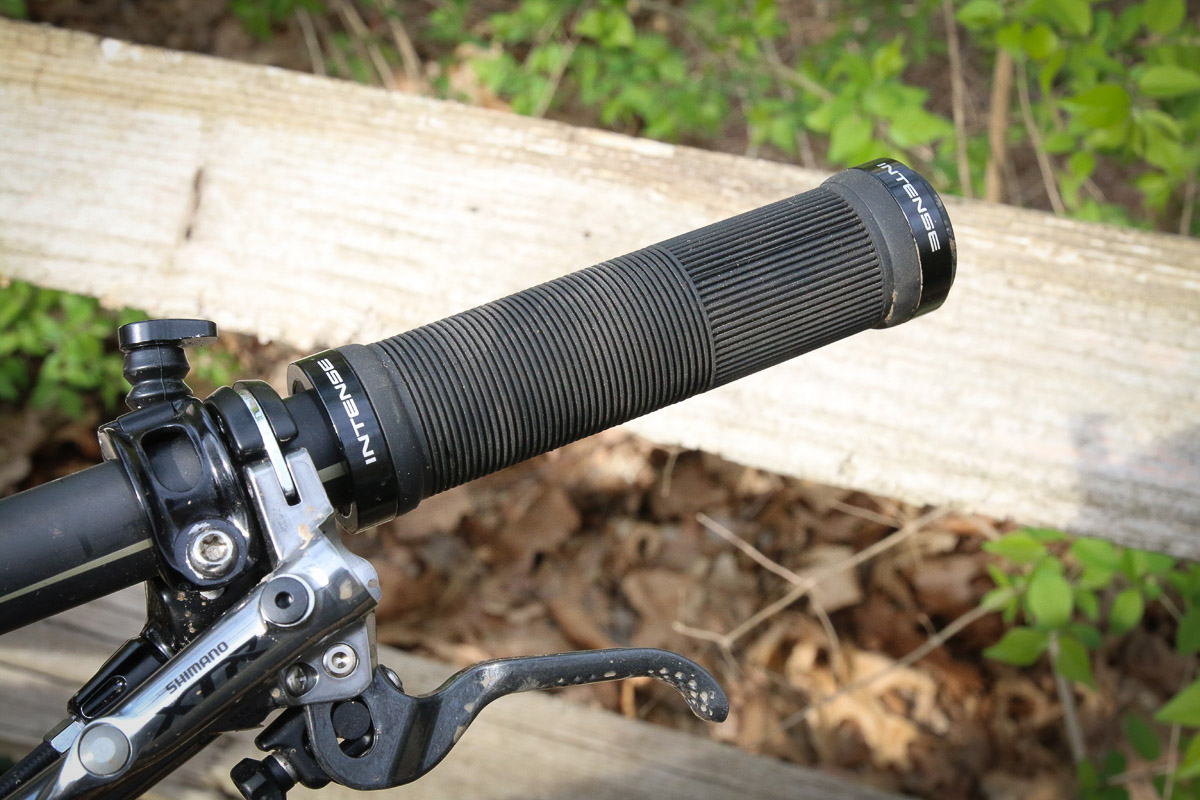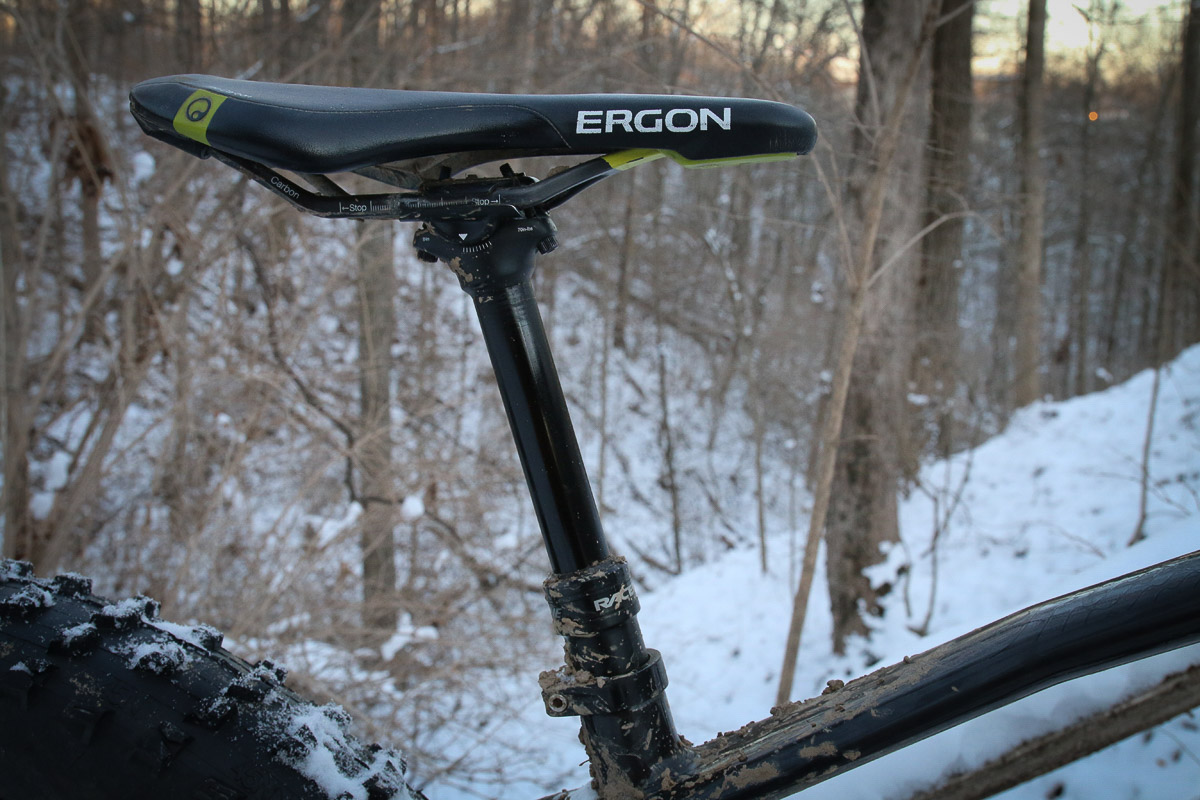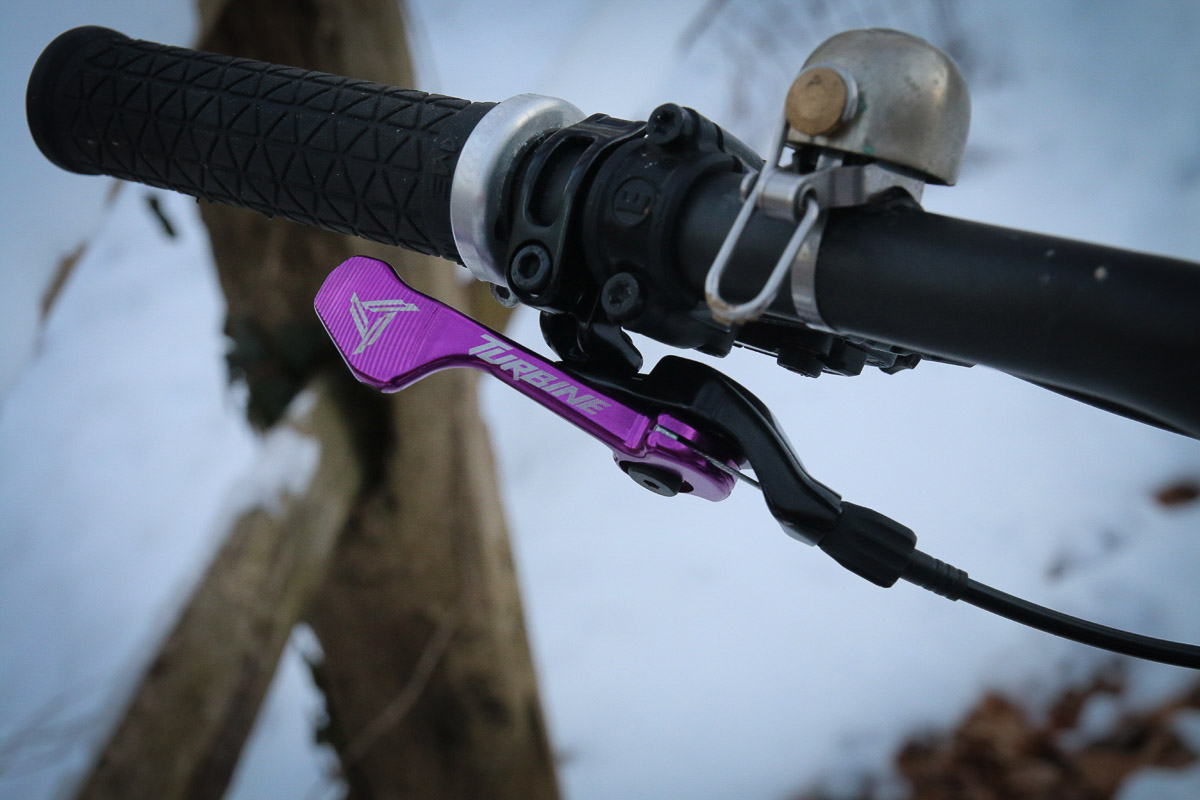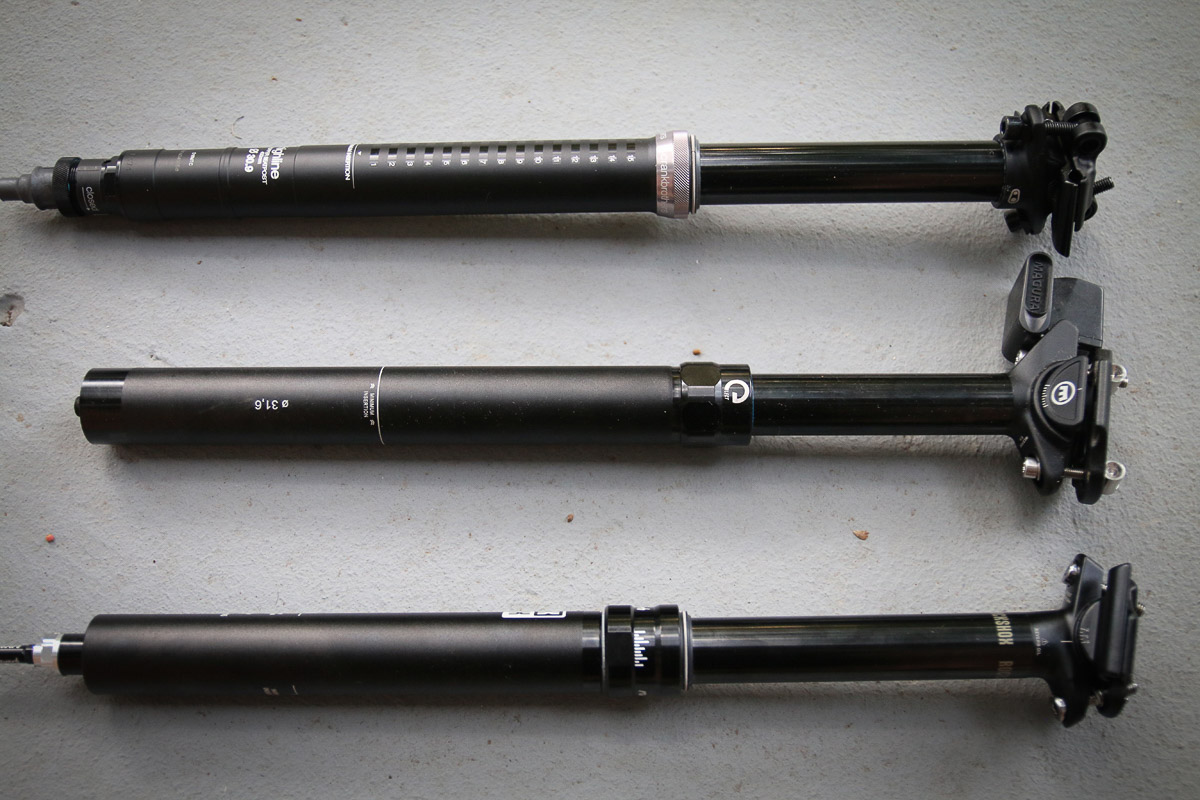Still on the fence about a dropper post? The newest crop of seat height adjusters are more durable than ever, and getting better all the time. But like many things, they’re also still not perfect. We got our hands on four of the latest posts to see how they held up to some abuse. The good news? None of them have failed (completely), and at least one was quite surprising…
For quite a while, when it came to dropper posts you basically had two choices – mechanical or hydraulically actuated. Now, with the introduction of the Magura Vyron (and others coming), wireless droppers are now a thing. In addition to how the dropper is actuated, there are also different methods of constructing the actual cartridge inside the post that makes it work. This roundup highlights the difference in construction, as each post has a different set up. The Crankbrothers Highline is a mechanically actuated, hydraulic post, the Magura Vyron is a wirelessly actuated hydraulic post, the Reverb is a hydraulically actuated hydraulic post, and the RaceFace Turbine is a mechanically actuated mechanical post. Each has their own positives and negatives, which we’ll get into soon, but there are further differences in the design of the post which contributes to their success or failure as well.
One area of dropper design that doesn’t get a lot of attention, is what lurks beneath the surface of the seat tube. Internal routing is great for keeping cables out of the way and making things look clean, but depending on the post, you can run into some issues with interference inside the frame. Of the four posts on test, the Crankbrothers Highline had the longest physical length, and was also one of the shortest travels at 125mm. The Reverb and the Turbine almost tied for the shortest tube length, while the Vyron has a longer tube than the Highline, but a shorter overall length. Note that the minimum insertion lengths of the posts are all very similar.
There are a few important things to consider when sizing a post to a new bike – most obviously, you want the exposed seat post at max travel to be less than your saddle height. You also need to pay attention down below since water bottle bosses inside the seat tube can interfere with longer dropper tubes like the Vyron’s, while short or curved seat tubes can spell trouble for longer posts like the Highline.
Key Measurements (listed in order – travel, distance from bottom of collar to middle of saddle rail at full extension, bottom of collar to bottom of post tube, and bottom of collar to absolute bottom of post):
- RockShox Reverb – Travel 150mm, Minimum height bottom of collar to saddle rails 190mm, Bottom of collar to bottom of post tube 195mm, bottom of collar to bottom of post 245mm
- Magura Vyron – Travel 150mm, 205mm, 237mm, 245mm
- Crank brothers Highline – 125mm travel, 172mm, 225mm, 290mm
- RaceFace Turbine – 125mm, 185mm, 190mm, 205mm
The design of the dropper post also has a big effect on the dropper remote. It may seem like a small detail, but a solid remote design can make or break a dropper. The best droppers all seem to have a 1x specific design which essentially replaces the front shifter paddle with a shifter paddle that activates your dropper.
Then of course there is the weight. On test there were various travel lengths and diameters with a 30.9mm 125mm travel Highline, 30.9mm 150mm travel Vyron, 31.6mm 150mm travel Reverb, and a 31.6mm 125mm travel Turbine. Weighed with all of the pieces to make it work (cable, housing, remotes, etc.), the Reverb comes out on top with a 574g weight. The others are shown above, but the Turbine has another piece not shown that adds another 8g, for a total of 599g.
Crankbrothers Highline
Without sugar coating it, after the Crankbrothers Kronolog dropper, the Highline had some serious ground to make up in terms of consumer trust. Because of that, Crankbrothers went back to the drawing board and came up with an entirely new design, and went as far as calling it the most durable dropper on the market and included a 3 year warranty.
So far, the Highline has delivered on Crankbrother’s promises. After the painless install, the post has been rock solid and is incredibly easy to use thanks to the well designed remote lever. Shaped and positioned like a shifter paddle, the lever includes a ball joint which can be positioned at almost any angle, then clamped down by the remote collar. The lever also clamps to the cable end rather than having the clamp at the seat post. We’ve found this set up to be less hassle and easier to adjust than the alternative.
The only area where the Highline could improve is the return speed. It’s actually a bit slow, while many droppers are too fast. It does speed up a bit as the post breaks in, but since there is no adjustment for return speed, that’s what you’re stuck with.
Crankbrothers stresses the internal construction with trelleborg sealing, igus LL glide bearings and keys, and a self contained hydraulic cartridge, and it shows. This post is so much better than the Kronolog. In fact, it’s better than all the other posts on test.
Details:
- Length – 400mm
- Diameter – 30.9, 31.6mm
- Travel – 125mm
Magura Vyron
By launching the first commercially available wireless dropper post, Magura took a huge leap. There are a ton of benefits to be had by eliminating wires, cables, and hoses, but there are also a number of issues that still have to be addressed for this post to be a contender. Most notably, there is a substantial lag between the moment you push the remote button and the time the hydraulic cartridge either opens or closes. When cruising along on tame XC style trails, this isn’t a huge issue. Eventually, you get used to the delay and learn how to work with the post. But when riding aggressive terrain at high speeds, being able to drop the post to a desired height becomes almost impossible. With the bike bouncing along the trail underneath you, the resulting saddle height becomes a function of where the bike is at that given time, which is often too high or too low for what you were going for.
We’re told that there will be some updates coming to the Vyron for the coming year, so don’t give up hope on this post just yet. As for the wireless function itself, battery live proved to be excellent, and if you’re ever out with a dying battery, the post goes into battery conservation mode before it fails. At that point, you have a number of drops left by pressing the button under the seat which is also where the charging port is located. Because of the addition of the charging port/switch on the seat post, you may find certain saddles to interfere with the design, but it will work with most standard railed saddles.
One of the absolute best features about the Vyron is the ease of installation and the ability to quickly swap it to another bike. During the testing of the Kona Hei Hei DL Carbon above, the cable broke on the KS LEV dropper right as I was headed out for a ride. I could have just ridden without a dropper for the day, but instead I grabbed the Vyron and had it installed in less than a minute. The same benefit applies to packing your bike where you have to remove the post, or if you happen to have multiple bikes and want to run one dropper.
The remote has been another spot of bother for some, but Magura has already come up with a solution. Because the Vyron uses the same remote as their eLect suspension system, the remote has three buttons, of which the round center button is dedicated to the dropper. At times, it can be difficult to locate such a small button when you’re barreling down the trail. To fix this, Magura has come up with a molded sleeve that will slip over current remotes. The sleeve turns that small center button into a large paddle, which should make it much easier to actuate. We haven’t actually tried this yet as Magura just finished up the design, but it should be a good upgrade when it’s ready.
Truthfully, I like the Vyron a lot, but I’m not going to pretend it doesn’t have its draw backs. The remote fix should help, and if Magura can shorten the delay in actuation, it will be a huge improvement.
Details:
- Travel – 150 mm (stepless)
- Length – (overall)446 mm
- Installation height – 57-207 mm
- Saddle clamp – 2 bolt system
- Weight – 595 g
- Diameters available – 30.9 mm, 31.6 mm
- Charging unit – Micro-USB
- Charging time – App. 3h
- Actuations – About 400 uses
RockShox Reverb Stealth
One of the longest running droppers in the game, the Reverb recently gained new guts for even better durability. My first ever dropper post was an externally routed Reverb, and it was good, but the new Reverb is better. Based on my own experiences, the new Reverb is definitely more durable – highlighted by the fact that I’ve had zero issues through testing. RockShox claims that the new post has added an SKF internal floating piston, more bushing overlap, and a few other tweaks to the internals to make it the best Reverb yet.
However, the Reverb’s added durability and performance seems let down by the continued use of the plunger style remote. Compared to the competition, the remote seems a bit outdated with a fairly small surface which can make it more difficult to use. We’ll often see grip tape added to the surface of the remote, especially for pro bikes, to make it easier to keep under your thumb while blasting trail. It seems a bit ironic that the company that has done so much to promote 1x drivetrains would still have a dropper remote that is 2x compatible. As soon as RockShox updates the remote for the Reverb, it will be tough to beat.
Details:
| Weight | 520g (Weight based on 340mm post length, 30.9mm diameter, 100mm travel, MMX™ remote with shifter hardware and 1300 hose) |
| Length | 340mm, 390mm |
| Colors | Black |
| Material | Shaft: 3D forged 7050 alloy , Head: 7050 forged alloy |
| Other | Zero offset , remote: adjustable return speed at the handlebar, discrete or Match Maker X, left or right |
| Available in | Travel: 100/125 ; Diameter: 30.9/31.6/34.9mm |
RaceFace Turbine:
Both RaceFace and Easton made a big splash when they introduced their first dropper posts. Essentially the same post, the Turbine is the RaceFace version of the Haven and both make use of technology licensed from 9Point8.
On my post, the performance started out great as the mechanical brake system seemed to offer infinite travel adjust and securely locked into place almost instantly. That was until a crash caused the remote to contact the top tube of my bike and it has been finicky ever since. Compared to other posts, the RaceFace seems to be much more sensitive to cable tension and I’ve run into issues with Turbine posts on other bikes as well. When it’s working properly, the Turbine is a great post, but the touchy nature of the cable tension seems like it could be improved. Otherwise, the ergonomics of the 1x lever are excellent though it is sold separately.
Details:
| Colour: | BLACK |
| Built For: | XC/Trail/Enduro |
| Weight: | 495 grams (30.9x440x150mm w/o lever) |
| Length: | 350mm, 375mm, 415mm, 440mm |
| Travel: | 100mm, 125mm, 150mm |
| Lever Actuation: | Mechanical |
| Head Type: | Zero Offset |
| Size: | 30.9mm, 31.6mm |
Verdict
At the end of the test, I’m surprised to say that I would probably take the Crankbrothers Highline out of the four posts here. It’s only criticism comes from a slightly slow return rate and a longer overall length, but the trade off is an incredibly smooth dropper with an excellent remote, and easy installation/adjustment. It’s also the cheapest on test at $350 with the excellent remote, and a 3 year warranty. It’s worth pointing out though, that if you don’t mind the remote on the RockShox Reverb, it comes in an easy second with a $471 price tag, the lightest weight in the bunch, and much improved durability.
